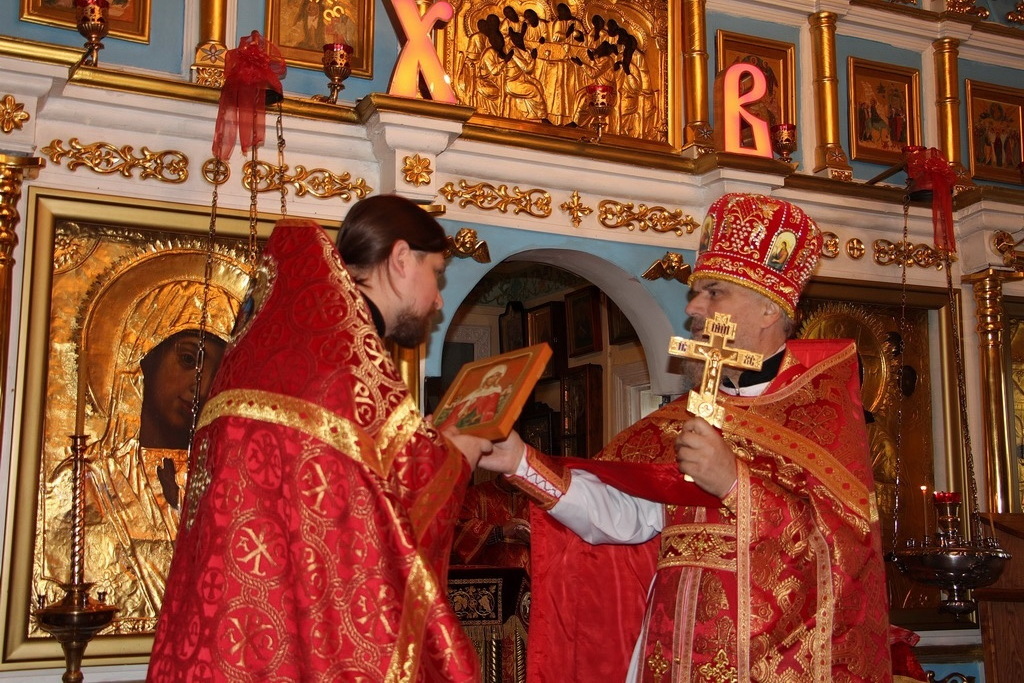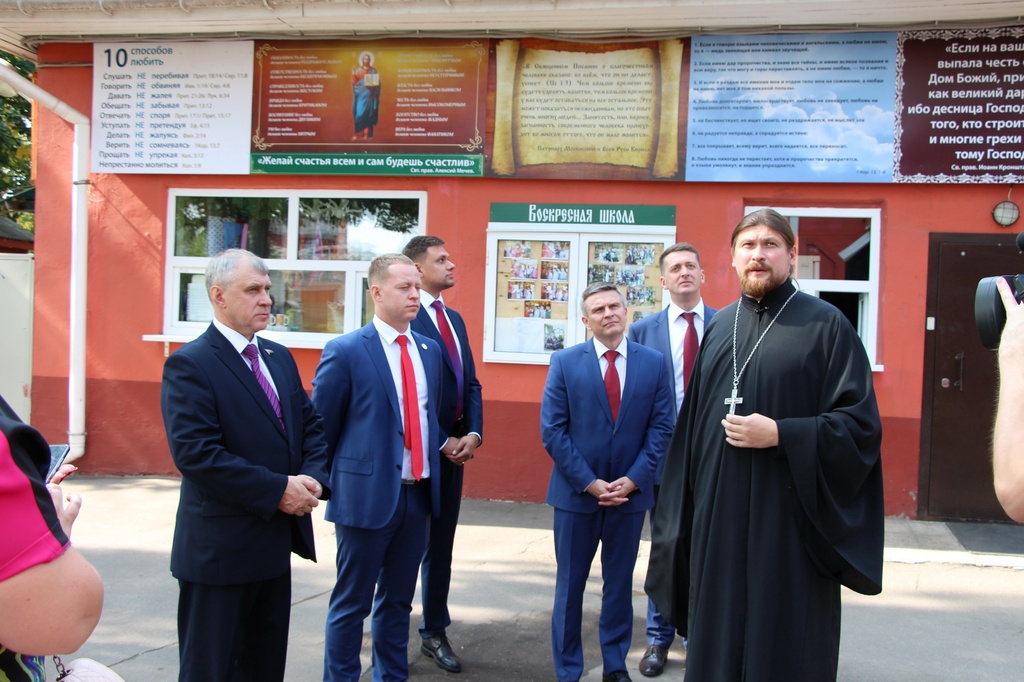In 2017, the 280th anniversary of the founding of the St. George Church in Ivanteevka, a city of regional subordination, located 17 km north-east of Moscow, was celebrated. This shrine had a happy share, having avoided the closure and subsequent desecration in the Soviet period, to live happily before the gracious times when the Russians again turned to the spiritual heritage of their ancestors. It should be especially noted that by the will of the Almighty, as well as thanks to the courage of the clergy and parishioners, the service in the St. George Church of Ivanteevka was not interrupted even in the midst of the most violent anti-religious campaigns.
Villages on the banks of the Uchi River
Before delving into the history of the St. George Church located in Ivanteevka, a few words should be said about the city itself. It is known that it was formed from three nearby villages located on the banks of the Uchi River - Vanteevo, founded in the second half of the 15th century, as well as Kopnin and Novoselok. From the first of them came its current name.
From archival materials it is known that over the next centuries the inhabitants of these villages were engaged in agriculture, until in the middle of the XIX century a weaving factory was founded there. The production of fabrics was developing successfully, and by the beginning of the next century a powerful industrial center had grown up on the site of the former agricultural enterprises, supplying its products both to the domestic market and abroad.
The good undertaking of the officer widow I.F.Sheremeteva
As for the religious life of the villagers, its beginning can be traced back to the first half of the 16th century, when a small wooden church was built on the banks of the Uchi, not far from the place where the St. George Church is located in Ivanteevka, consecrated in honor of the holy Great Martyr George. Over the course of a century, it became quite dilapidated, and in 1668 the merchant I.I. Biryukin-Zaitsev, who owned the village of Vanteevo at that time, built in its place a new one, the same wooden one and dedicated to the same great sufferer as her predecessor.

This shrine was destined to stand for a little more than sixty years, namely until the time when the village in which it was located was inherited by Irina Fedorovna Sheremeteva, the widow of a naval officer, one of the active assistants of Peter the Great in the creation of the Russian fleet. Considering this, the second in a row, St. George Church to become extremely dilapidated, she turned to the Holy Synod with a request to build a new church in her village - also a wooden one, but more spacious and roomy.
Constructing and consecrating a new church
Having received a blessing from the capital, Irina Fedorovna immediately began to fulfill her plan, and after 7 years on the picturesque bank of the river, where the stone St. George Church (Ivanteyevka) now stands, a wooden domed single-throne church with a bell tower, made in the best traditions of the Russian church, rose architecture of that time. It was erected on a stone foundation and covered with sheet metal from above.
In December 1737, a group of priests arrived from the Assumption Cathedral of the Moscow Kremlin, led by Archpriest Father Nikifor (Ivanov), sent for its solemn consecration. It is this significant event that is considered to be the beginning of the history of the temple of the Great Martyr George, which is discussed in our article.
Status of the ascribed church
After another century, the population of Vanteev and the two villages adjacent to it decreased significantly due to the fact that many serfs were sent by their owner - landowner F. S. Malgunov - to settle other territories belonging to him. In those days, when almost a quarter of a century remained before the abolition of serfdom, this was a common occurrence.
With the resettlement of peasants, the number of parishioners of the church, which was the forerunner of the St. George Church now existing in Ivanteevka, significantly decreased. In this regard, a resolution was issued by the Holy Synod, according to which, due to the small number of the parish, it lost its independence and was attributed to the church of St. Sergius of Radonezh, located in the village of Komyagino near Moscow.
From that time until 1918, the peasants were fed by Komyagin priests who regularly performed services in their church, which received ascribed status for this period. This situation did not change even after a weaving factory opened next to it, which later became a powerful industrial complex and brought together a large number of visiting workers, replenishing the number of parishioners.
Anonymous contributor
This church, erected on the initiative and at the expense of I.F. Sheremeteva, was destined for almost a century and a half by the ringing of her bells to gather the inhabitants of the surrounding villages for worship. But the wood from which its walls were erected, as you know, the material is very short-lived, and at the end of the XIX century the question arose about the overhaul of a very dilapidated structure by that time. It was then that the St. George Church, which has been preserved to this day in Ivanteevka, was built.
The funds needed for the work were found quickly. According to the surviving documents, in 1886, they were provided by one wealthy Moscow merchant who did not want to reveal his name in order to fully fulfill God's commandment for alms, which are done in secret. His generous donation made it possible to erect a new church building in the same place as soon as possible, made in the architectural style characteristic of that period, called the “pseudo-Russian”.
Bright image of wooden architecture
Even today, after many decades from the date of construction, due to the simplicity and laconicism of forms, this building is in perfect harmony with the surrounding landscape of the modern city of Ivanteevka. St. George's Church, whose address is: st. Novoselki, 53, is rightfully considered not only the center of the spiritual life of citizens, but also a unique architectural monument - one of the brightest examples of Russian wooden architecture from the end of the 19th century from those preserved in the suburbs.

Most of the archival documents related to the construction work of that time have been lost, but the results of the study of its foundation testify to the fact that the current church was built exactly where the St. George Church, founded in 1737, was located. According to experts, it is completely composed of bricks produced at the beginning of the XVIII century, and the integrity of the masonry suggests that it was never dismantled. Other elements of the previous building have been preserved. Among them are sheets of tinned iron covering the roof, as well as a dome cross of the late 18th century and forged window grilles during the same period.
Consecration of the new temple
The date of birth of the present temple is considered to be 1892. The reason for this is the entry in the "Clear sheet" of the very Sergius Church of the village of Komyagino, to which, as mentioned above, he was attributed. This document mentions that on May 11, "this year," Metropolitan of Moscow Leonty (Lebedinsky) personally visited the St. George Parish and consecrated the church, built in honor of the patron saint of the Christian-loving Russian army.
Temple Looting
Despite the fact that by God's grace the temple escaped closure in the period following the October 1917 armed coup, and also survived all the many anti-religious campaigns, troubles did not pass by it. So, already in the third year after the establishment of the Bolshevik regime in the country, the decision of the commission on the seizure of church property was requisitioned, and simply put, everything that was material in it was looted.
Silver vestments of icons and salaries of the Gospels, altar crosses and precious chalice (cups for communion) were taken from the parishioners and lost forever. This blatant lawlessness continued in the mid-30s, when, supposedly for the needs of non-ferrous metallurgy, the ancient bells were dropped and sent to re-melting.
The last hotbed of Orthodoxy
However, religious life in it was not interrupted, as evidenced by the schedule of services constantly posted on the doors of the St. George Church in Ivanteevka. This usual schedule today was extremely important for believers because the rest of the churches, not only in the city, but in the entire surrounding district, were closed, and it was here that the last center of Orthodoxy was preserved.
Unable to close the temple, the authorities repressed his clergy and the most active parishioners. So, the fate of the townspeople was preserved, which fell to the lot of two priests - Father Seraphim (Golubtsov) and father Gabriel (Raevsky). Both of them were arrested on false charges of anti-government activities and spent many years in Stalin's camps.
Temple life today
Over the years since the beginning of perestroika, many shrines illegally taken from them were returned to the believers of Russia. Religious life of the Moscow Region was revived in due volume. However, as before, one of the most significant spiritual centers of this region of the country remains the St. George Church in Ivanteevka.
The schedule of services held daily by the clergy, led by the rector Archpriest Father Alexy (Barashkov), fully complies with the requirements of the ROC Charter. So, on weekdays, its doors open at 7:30 for all who wish to confess before the Divine Liturgy, starting at 8:00. From 5:00 p.m., evening services are performed under the arches of the church and akathists are prescribed by the Orthodox calendar.
On holidays and Sundays, the schedule of services in the St. George Church of Ivanteevka is somewhat different. They begin an hour earlier - at 6:20 with a confession and then the next early liturgy. At 9:30, the Liturgy is celebrated, and at 17:50, the all-night vigil. The parishioners will learn about all the changes in this schedule from ads placed both in the temple premises and on its online resources.